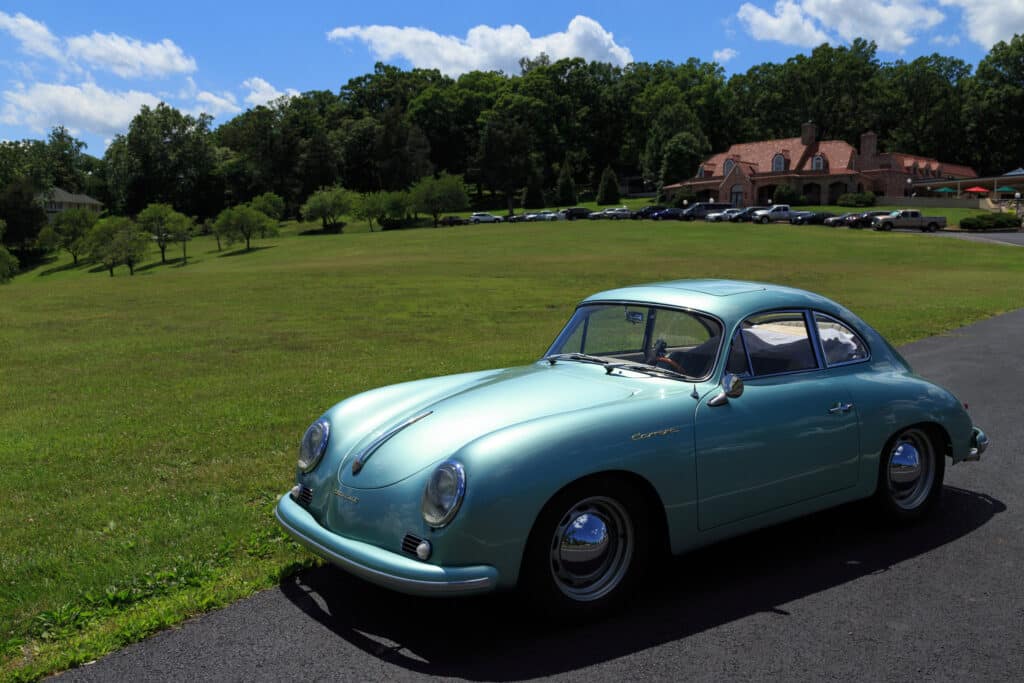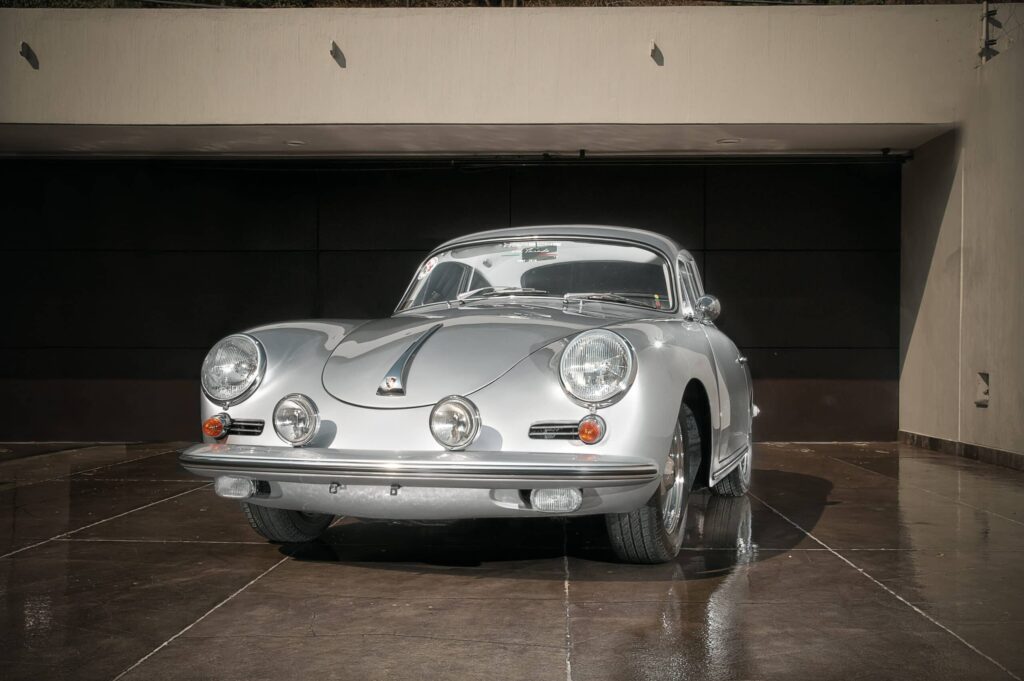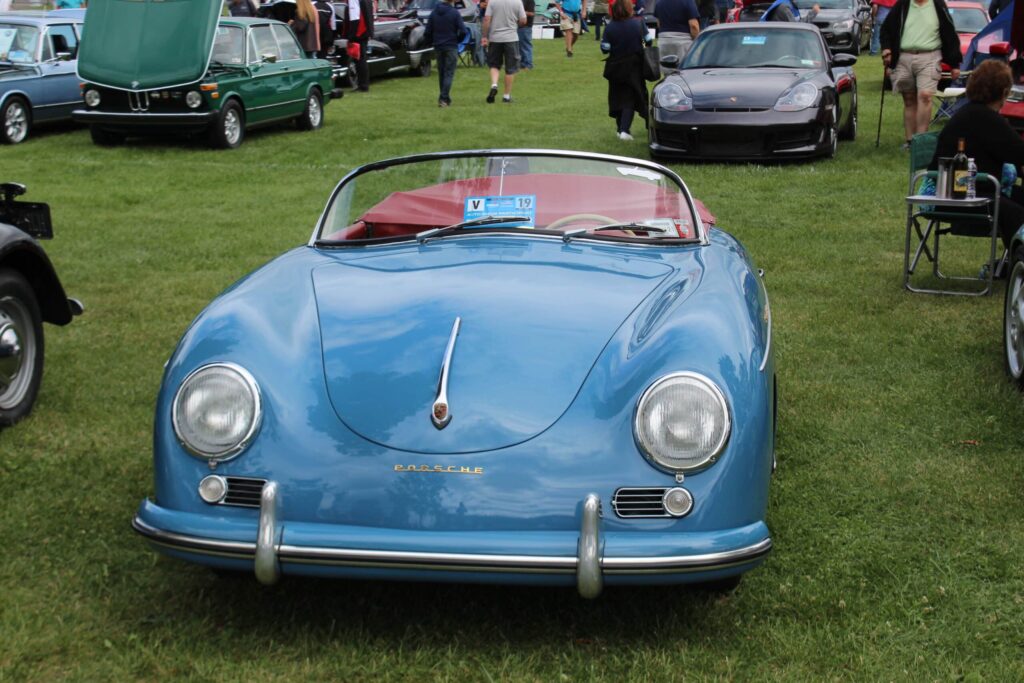For many, the Porsche 356 is one of the most significant models in this manufacturer’s rich history. For a start, this was the first mass-produced car made by the famous Stuttgart-based company. It was also the model that became popular among enthusiastic drivers on both sides of the Pond. But most importantly, it transformed Porsche from a small-scale contractor into one of the biggest names in the industry. That was quite an achievement, as the first Porsche 356’s were made inside an old mill in the small Austrian town of Gmuend. How about that for a success story?
The history behind the Porsche 356
The story of the Porsche 356 starts with its spiritual predecessor, the legendary Bettle. This mundane and rather unsporty car was designed by Ferdinand Porsche for the newly founded Volkswagen automotive manufacturer. The principal idea was to create a simple and affordable vehicle for the masses. Hence the Volkswagen name, which translates as a Car for the People. The resulting Volkswagen Type 1, afterward more commonly known as Bettle, has become one of the most influential vehicles of all time. But although the design was finished by the late 30s, the upcoming World War II significantly postponed its mass production.
The Porsche 356 was the brainchild of Fernand’s son, Ferry. After the end of the war, he used the Bettle as a basis for a design of its own. As once said, he decided to build the perfect racing car because he couldn’t find one. The basic idea was that the Porsche 356 would be light and uncomplex, which would make it different from other sports cars of the time. And because materials were sparse in post-war Austria, where Ferry based its business, it would share many parts with the Bettle. Still, this stop-gap solution proved to be one of the main reasons for its future popularity.
The iconic looks that started with the Porsche 356
Some things in the automotive industry are so iconic and timeless that they need no introduction, with Porsche’s shape being one of them. For decades, most of their vehicles shared the same design language and had similar styling cues. This is most evident with the 911 range, whose basic shape remained the same throughout all generations. And the Porsche 356 was the very car that started this trend.

Apart from the Bettle, Porsche 356’s design was inspired by racing car concepts on which Ferry and his father, Ferdinand, worked previously. The Type 64 racer and Cisitalia Grand Prix single-seater are the most prominent examples of this influence. Despite the differences in purposes and drivetrain configurations, it is easy to see the resemblance between these cars and the 356. These cars share a streamlined, teardrop-like design, which has ensured impressive aerodynamics.
There were four distinct Porsche 356 variants made during different times of its production. The early models, now known as the prototypes, were hand-built in Austria and had aluminum body panels. Succeding German-built cars had a steel body and were named 356 A, 356 B, and 356 C. The differences between these three models are minor and mostly cosmetic.
Porsche 356’s mechanical underpinnings
Given its racing aspirations, the Porsche 356 had a tiny engine, at least to say. Depending on the model and the year of production, they ranged from only 1.1 to 2L of displacement. As a matter of fact, this car had the same engine block and some other parts as the Beetle. Still, its cylinder heads and most combustion-related components were thoroughly reengineered. With all these modifications, the power output ranged from 60 horsepower to a maximum of 95 horsepower for the late 2L model. That may not seem a lot, but the engine only had to cope with 1600 pounds, which was how much these Porsches weighed at full load.
Still, the shape of this engine, not its power, is what mattered the most with this car. Like the Bettle, this was a flat-4 boxer, with two cylinder banks laying flat one against the other. A configuration like that makes it compact and able to fit in small places. In addition, an engine like this engine sits low, which lowers the center of gravity and improves handling. Another significant characteristic is that these engines are air-cooled, or Luftgekult, as the Germans say. This eliminates the need for radiators and coolant hoses, simplifying the engine bay layout and reducing weight.

Like the engine, other major components, such as suspension and steering, were redesigned to fit the new role. The ride was almost an ideal balance between comfort and handling, making the 356 at home on every surface. Lastly, disc brakes were sharp while being robust enough to not fade under loads.
Reasons for Porsche 356’s popularity
When unveiled in 1948, the Porsche 356 was the complete opposite of almost every contemporary sports car. Lightness and simplicity, its most prominent features, were in stark contrast to what other manufacturers offered at the time. As such, this agile little car quickly caught the attention of drivers that were looking for something different. Furthermore, when it started winning at various racing events, such as the class win at Le Mans in 1951, it became apparent that Porsche 356 was a game-changer. And when looking back at the whole situation, it is easy to see why.
One thing the Porsche 356 proved is that, even when not immensely powerful, a car can be fast and fun to drive. This was, at least, once the driver had mastered its signature-mark handling caused by the engine being at the back. Sure, with limited power at the tap, neither top speed nor acceleration was blistering. But the Porsche was thrilling to drive on twisty roads because of its ample suspension. And that rear-mounted drivetrain pressing on the wheels beneath it ensured outstanding traction in slippery conditions.

It also proved to be a reliable machine that could take a lot of abuse. And even when it would break down, fixing it was usually inexpensive, as it shared many of its components with the Bettle. Because buyers eventually recognized these values, more than 75,000 Porsche 356 were sold by the end of its production in 1965. A big success for a car whose original production goal was approximately 500 units per year.
Porsche 356’s legacy
There are two main aspects to consider when establishing how Porsche 356 affected the automotive world. Firstly, there is its significance for the manufacturer itself. Before putting this sporty car into production, Porsche was, in essence, an engineering bureau that mainly designed vehicles for outside customers. At the time, their manufacturing facilities were limited to an improvised workshop, where the first 50 Porsche 356’s were made. With its popularity among drivers and competitiveness on the track, this car eventually became a sales hit. Besides improving the company’s presence and financial stability, this also proved that a lightweight sports car with an engine at the back was a viable concept. It was only logical to use the same basic recipe when designing its successor, the first of many 911 cars. And this is a legend that needs no introduction.
But Porsche 356 also demonstrated how a light, well-built car could go neck-to-neck with much more powerful counterparts. The impact on the automotive industry was significant as it consequently opened the way for various similar models. If it hadn’t been for Porsche 356, cars like Mini Cooper or Lotus might have had not even existed. Furthermore, its successful usage of the rear-engined car for racing applications made other manufacturers re-evaluate the layouts in their high-performance models. Undoubtedly, this helped trigger the transition towards mid-engine setups in these cars.
The conclusion about the Porsche 356
As shown in this article, the Porsche 356 was envisioned by Ferry Porsche as the perfect race car. The initial idea was that it would sell just enough to fund other upcoming vehicle designs. However, this lightweight and nimble sports car soon became very popular, consequently changing the face of the automotive world.





